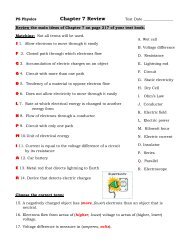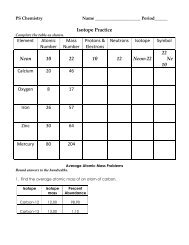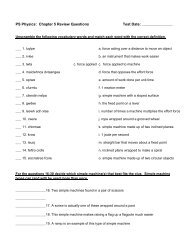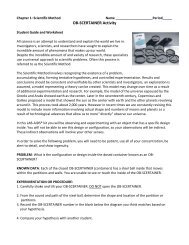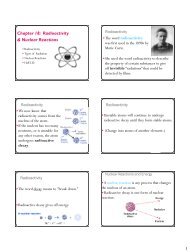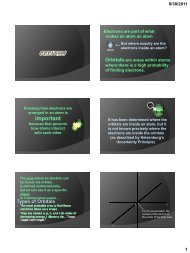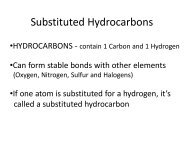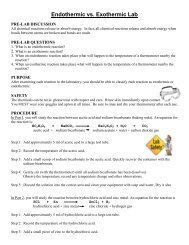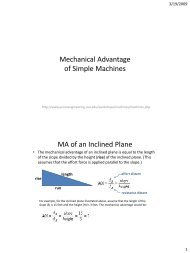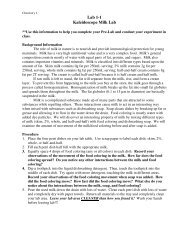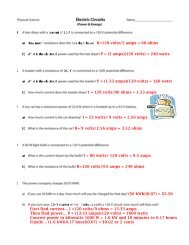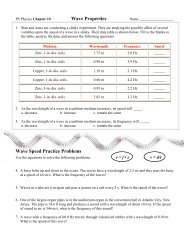Create successful ePaper yourself
Turn your PDF publications into a flip-book with our unique Google optimized e-Paper software.
9. Answer question #4.<br />
10. Strike the following tuning forks and hold each one just on the inside of the corresponding tube.<br />
Tube (scale)<br />
D<br />
E<br />
F<br />
G<br />
A<br />
B<br />
Tuning Fork Frequency<br />
288 Hertz<br />
320 Hertz<br />
341. 3 Hertz<br />
384 Hertz<br />
426.7 Hertz<br />
480 Hertz<br />
Assessment<br />
<strong>Activity</strong> Station #1<br />
1. What type of sound did you produce? What did it sound like?<br />
2. Which glass had the highest pitch sound? Did it have more or less water?<br />
3. What do you believe caused the sound, the water, the air, or the glass?<br />
4. Were you able to set up a musical scale? If so, how did the amount of water and pitch compare?<br />
<strong>Activity</strong> Station #2<br />
1. What was the relative loudness of the tuning fork, was it loud or could you barely hear it?<br />
2. Using the stopwatch, how long does it take for the sound to die out so you can no longer hear the<br />
tuning fork?<br />
3. What is the relative loudness now, was it loud or could you barely hear it?<br />
4. Using the stopwatch, how long does it take for the sound to die out so you can no longer hear the<br />
tuning fork?<br />
5. Which tuning fork spilled the most water? WHY?!<br />
<strong>Activity</strong> Station #3<br />
1. How is sound transferred from one cup to the other?<br />
2. What is the medium that it is being transferred in?



